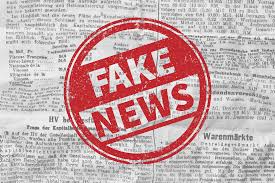In the digital age, fake news has become a pervasive and profitable enterprise. From clickbait farms to sophisticated disinformation campaigns, various actors exploit misinformation to generate significant revenue. This article delves into how fake news creators monetize their content, the role of social media platforms, and the broader implications for society.
1. The Economics of Fake News
Ad Revenue and Clickbait
Fake news websites thrive on advertising revenue. The primary goal is to attract as many visitors as possible to their pages, thereby increasing the number of ad impressions and clicks. This is achieved through sensational headlines and clickbait content that grabs attention and encourages sharing. Once visitors land on these pages, they are bombarded with advertisements from various networks. According to research, some fake news sites can earn up to $40,000 per month from ad services like Revcontent and Taboola, which often feature on these platforms【7†source】.
Sponsored Content
In addition to traditional ads, many fake news sites rely on sponsored content. Companies looking to promote their products or services pay these sites to publish articles that appear to be genuine news. These articles are often indistinguishable from the site’s other content, further blurring the line between real and fake news【7†source】.
2. Social Media: The Catalyst for Misinformation
Viral Sharing and Engagement
Social media platforms are instrumental in the spread of fake news. These platforms are designed to maximize user engagement, often prioritizing sensational content that drives clicks, likes, shares, and comments. Algorithms used by platforms like Facebook and Twitter promote content that generates the most interaction, regardless of its veracity. This creates a feedback loop where fake news proliferates because it engages users【9†source】【10†source】.
Monetization Programs
Platforms like Facebook and Google have monetization programs that allow content creators to earn money from ads displayed on their videos or articles. Fake news creators exploit these programs by generating large followings and high engagement rates, making their content eligible for these programs. This includes using services like Google AdSense and Facebook’s Instant Articles to earn ad revenue【11†source】.
3. The Anatomy of Fake News Production
Content Creation and Theft
Creating fake news content is often a straightforward process. Many fake news sites republish content from other sources, sometimes with slight modifications to avoid copyright issues. They also fabricate stories entirely, often using a mix of real events and fabricated details to create plausible but false narratives. The cost of setting up a fake news website is minimal, making it a low-risk, high-reward venture【9†source】.
Fake Social Media Accounts
To boost the reach of their content, fake news creators often use fake social media accounts. These accounts, which appear to be real people, are used to share and promote fake news stories. By engaging with genuine users and participating in discussions, these fake accounts can significantly amplify the spread of misinformation. They are particularly effective in seeding fake news in specific interest groups or communities that are likely to be receptive to the content【9†source】.
4. Case Studies and Examples
Political Disinformation
During the 2016 U.S. presidential election, fake news was rampant. Actors from countries like Macedonia created websites and social media pages to spread political misinformation. These actors did not need to understand the local context or language; they merely exploited existing political tensions to generate clicks and revenue. Similar tactics have been used in other countries, with fake news creators targeting hot-button issues to maximize engagement【11†source】.
Health Misinformation
The COVID-19 pandemic has been another fertile ground for fake news. False information about the virus, treatments, and vaccines spread rapidly on social media, often driven by sites looking to cash in on the public’s fear and uncertainty. This misinformation has had real-world consequences, including reduced vaccine uptake and increased public health risks【8†source】.
5. Countermeasures and Challenges
Platform Accountability
There have been calls for greater accountability from social media platforms. Critics argue that these platforms have a responsibility to curb the spread of fake news, particularly when they profit from it. Measures such as flagging disputed content, improving fact-checking processes, and demonetizing known fake news sites have been proposed. However, these measures face significant challenges, including the sheer volume of content and the difficulty of distinguishing fake news from legitimate content【10†source】【11†source】.
Legal and Regulatory Actions
Governments and international bodies are also seeking to address the problem through regulation. Proposals include stricter rules on advertising transparency, real-name registration policies to reduce anonymity, and penalties for platforms that fail to act against misinformation. These regulatory efforts aim to create a safer and more trustworthy online information environment【10†source】.
Conclusion
The business of fake news is a complex and evolving landscape. While the primary drivers are financial, the impact of misinformation extends far beyond economic gain. It undermines public trust in media, exacerbates social divisions, and poses significant risks to public health and safety. Combating fake news requires a multifaceted approach, including technological solutions, regulatory measures, and public education. As society continues to grapple with the challenges of the digital age, addressing the scourge of fake news remains a critical priority.
By understanding how fake news creators operate and the systems that enable them, stakeholders can better develop strategies to counteract misinformation and protect the integrity of information in the digital era.
Sources:
- PolitiFact: “The more outrageous, the better: How clickbait ads make money for fake news sites”【7†source】.
- George Washington University: “Social Media Companies Profiting from Misinformation”【8†source】.
- UC Santa Barbara: “Where Does Fake News Come From?”【9†source】.
- Brookings: “How to combat fake news and disinformation”【10†source】.
- MIT Technology Review: “How Facebook and Google fund global misinformation”【11†source】.



